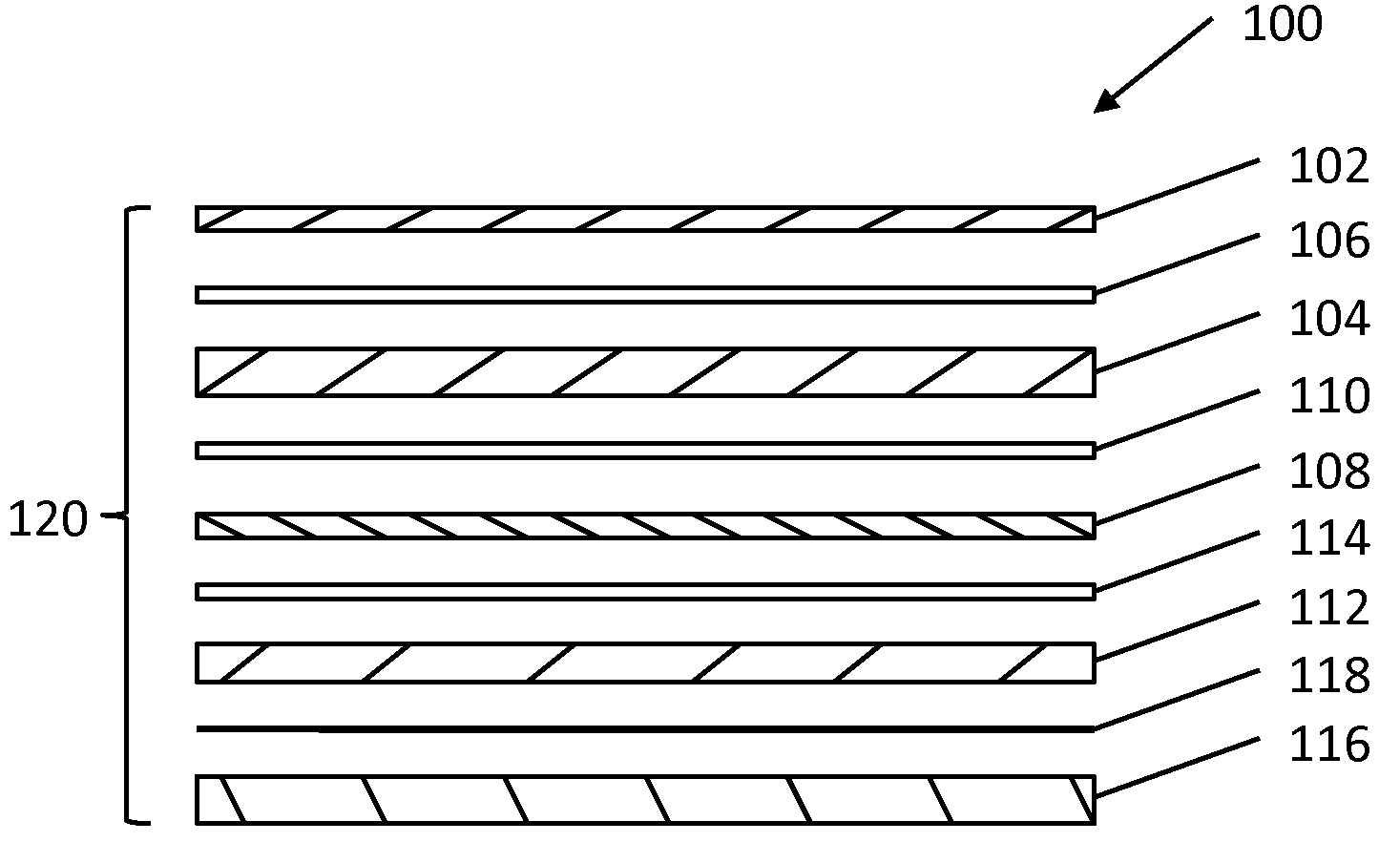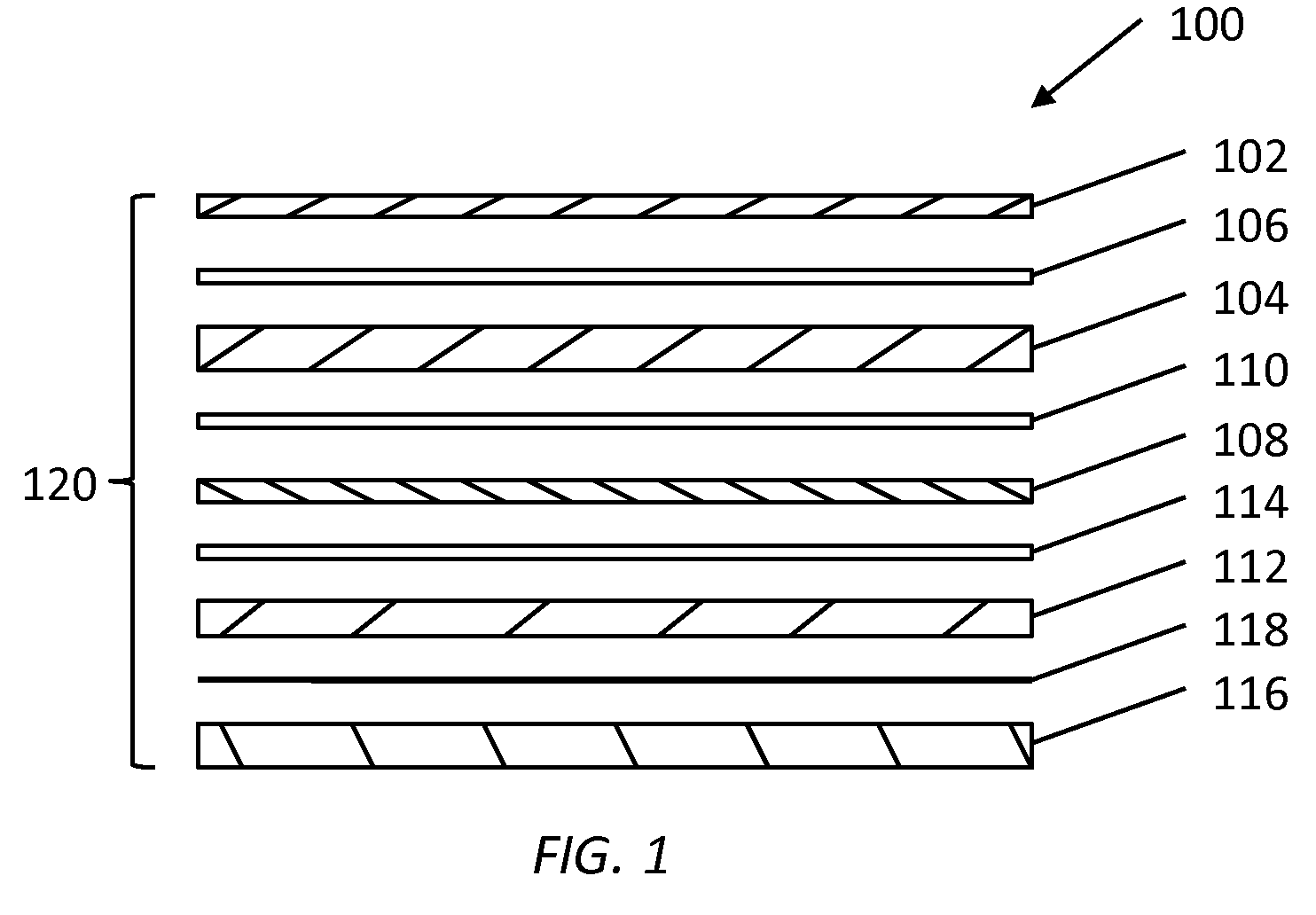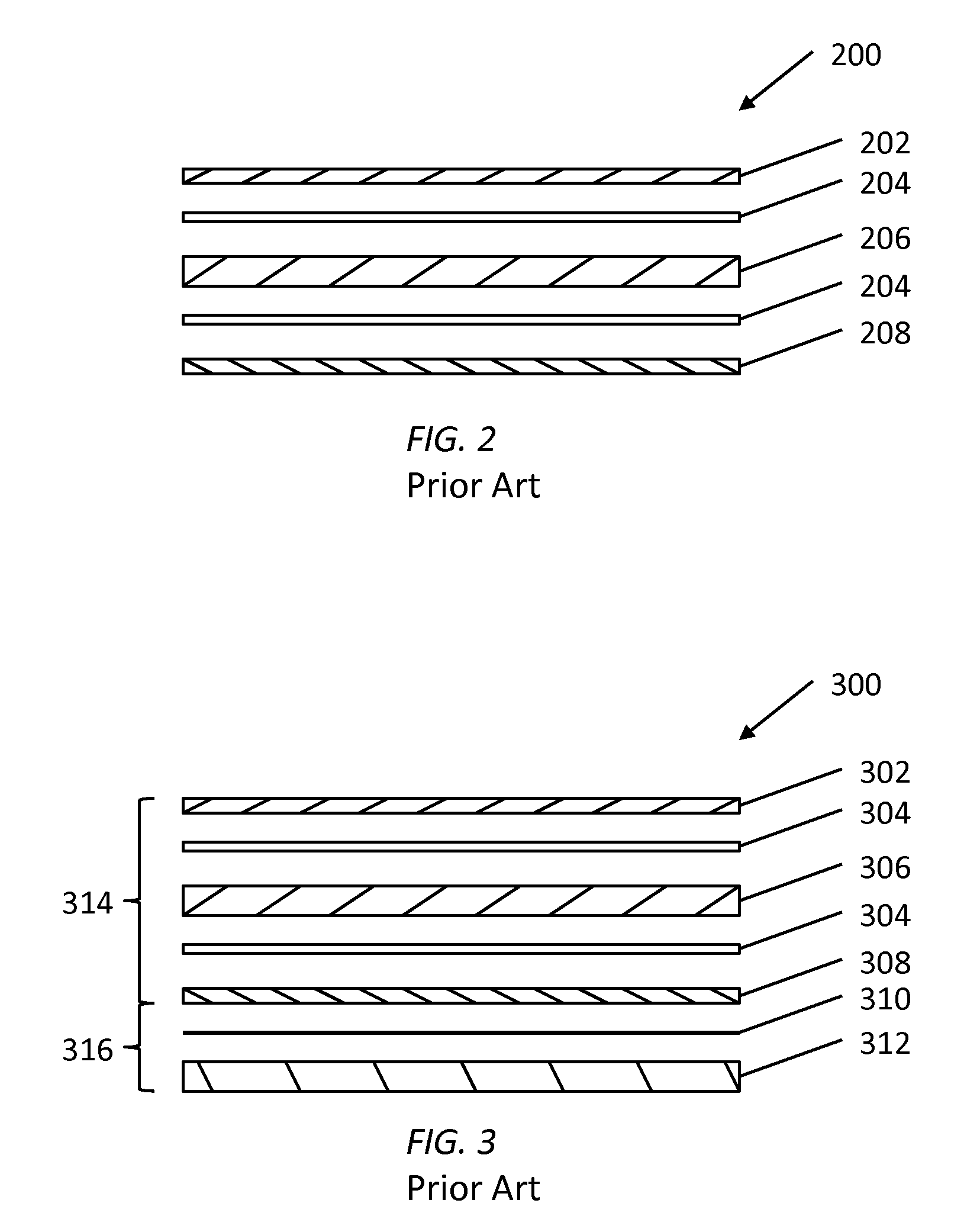Non-glass photovoltaic module and methods for manufacture
a photovoltaic module and non-glass technology, applied in the field of photovoltaic modules, can solve the problems of not being able to bend or cut glass plates to size, the use of glass plates presents many inherent problems, and the source of becoming a viable alternative, so as to prevent bending and cracking and prevent leakage of electrical curren
- Summary
- Abstract
- Description
- Claims
- Application Information
AI Technical Summary
Benefits of technology
Problems solved by technology
Method used
Image
Examples
experiment # 1
[0043]Experiment #1. The lamination of a 140 W solar panel having a panel size of approximately 42″×39″ was performed. ETFE film (5 mil) was laid out on a flat surface. A first layer of XUS film (15 mil) was applied on top of the ETFE film. Several strings cells were then laid on top of the XUS film. A second layer of XUS film was applied on top of the solar strings followed by an EPE (10 mil) layer, or a back protection sheet. The third layer of XUS film was applied on top of the back protection sheet. The substrate support panel was added last. The stacked layers of plastics, solar cells and substrate panel were placed into a laminator and underwent a lamination process at about 150 degrees C. for approximately 5 minutes and under 1 atmosphere of pressure (14.7 psi). The compressed solar panel was removed from the laminator after 5 minutes.
experiment # 2
[0044]Experiment #2. The lamination of 90 W solar panels having a panel size of approximately 21.5″×47″ was performed. ETFE film (5 mil) was laid out on a flat surface. A first layer of XUS film (15 mil) was applied on top of the ETFE film. Several strings cells were then laid on top of the XUS film. A second layer of XUS film was applied on top of the solar strings followed by an EPE (10 mil) layer, or a back protection sheet. The third layer of XUS film was applied on top of the back protection sheet. A steel sheet (10 mil) was placed on top of the XUS film. The stacked layers of plastics, solar cells and steel sheet were placed into a laminator and underwent a lamination process at about 150 degrees C. for approximately 5 minutes and under 1 atmosphere pressure (14.7 psi). The compressed solar panel was removed from the laminator after 5 minutes.
PUM
 Login to View More
Login to View More Abstract
Description
Claims
Application Information
 Login to View More
Login to View More - R&D
- Intellectual Property
- Life Sciences
- Materials
- Tech Scout
- Unparalleled Data Quality
- Higher Quality Content
- 60% Fewer Hallucinations
Browse by: Latest US Patents, China's latest patents, Technical Efficacy Thesaurus, Application Domain, Technology Topic, Popular Technical Reports.
© 2025 PatSnap. All rights reserved.Legal|Privacy policy|Modern Slavery Act Transparency Statement|Sitemap|About US| Contact US: help@patsnap.com



